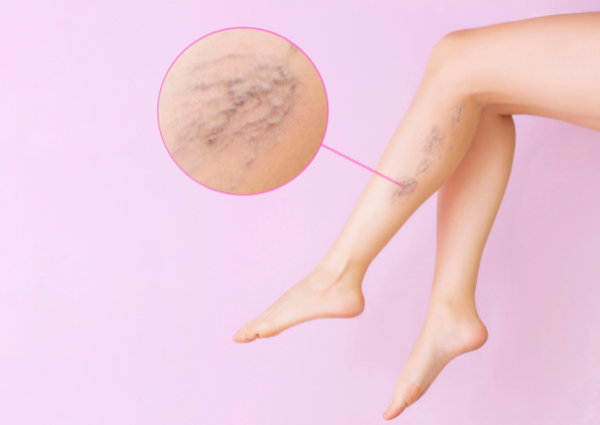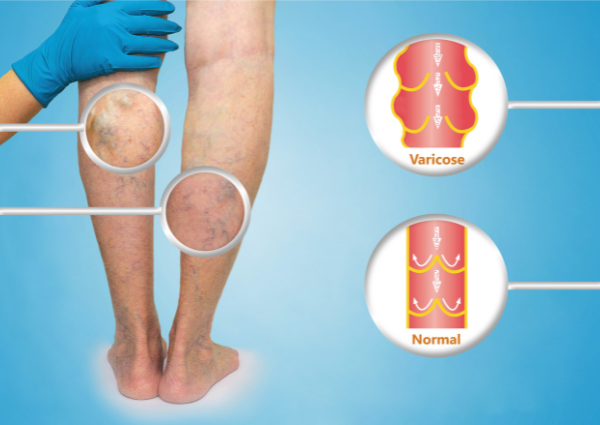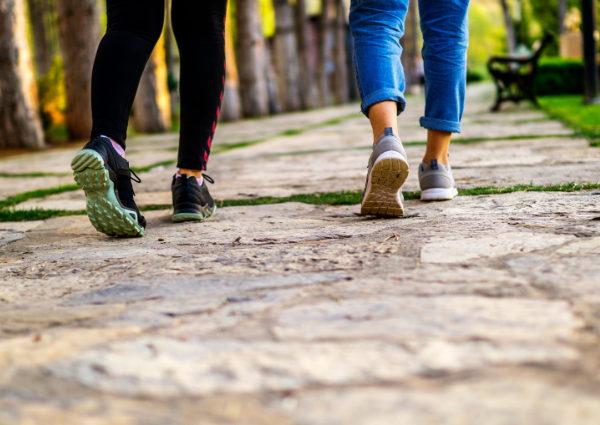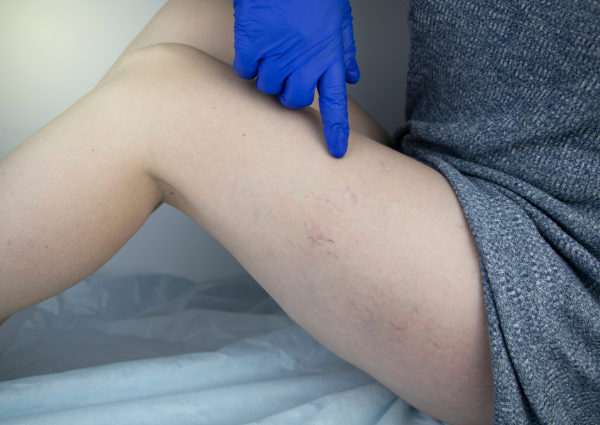Vein Specialist Explains: How to Get Rid of Varicose Veins Effectively

Over 80 million Americans suffer from varicose veins, a serious medical condition that could lead to other issues if left untreated. This problem is more common than you might think, and treating varicose veins isn’t always straightforward.
We spoke to Dr. Matthew Dicker, a diagnostic and interventional radiology specialist from VISP that uses minimally invasive methods to treat problems with varicose veins. Here’s what he had to say.
What Are Varicose Veins?

“Varicose veins develop in the fat found between the muscles and the skin. As you age or as hormone levels fluctuate, the valves in your veins of the legs weaken, allowing blood to seep backward.
When blood pools in this manner, it can force veins to expand and protrude. Your veins may get twisted and enlarged and become quite noticeable as a result.
Varicose veins are distinguished by their dark blue or purple color, and they frequently protrude from beneath the skin.” explains Dr. Dicker.
“You may also notice throbbing or burning in your legs and muscle cramps that are significantly more pronounced at night.”
How to Treat Varicose or Spider Veins
Varicose or spider veins (a less severe case of varicose veins) are often a cosmetic problem for many sufferers, which is why they will go to great lengths to get rid of varicose veins. Dr. Matthew Dicker has offered his expert advice on how to treat varicose veins at home. Here are some of his top recommendations:
1. Exercise Regularly to Improve Blood Flow in Your Leg Veins

Many varicose vein sufferers often think doctors recommend exercise for almost every ailment. However, the association between an active lifestyle and improved blood flow is evident.
Dr. Dicker explains that “The leg muscles are your most powerful ally. Why? They assist your veins in pumping blood back to the heart.
Because your muscles work against gravity, this is really beneficial. Any leg workouts will also assist to prevent new varicose veins from appearing.”
This means leg days at the gym may be more beneficial for maintaining healthy veins than you might have thought!
Reminder: Not all exercises are recommended for people with varicose veins. For more information, read: Exercises for Varicose Veins.
2. Don’t Sit or Stand for Long periods
“The truth is that office employees are at a higher risk of developing or aggravating varicose veins because they tend to spend a lot of time seated at their work desks.
Therefore, taking regular breaks to stand up, stretch your leg muscles, and walk for a few minutes at least every half hour is important. When you’re standing, your leg muscles transport blood towards your heart more than when you’re sitting.” Dr. Dicker explains.
3. Use Compression Stockings
“Most pharmacists sell compression stockings, which can help relieve varicose vein symptoms by exerting pressure on the legs, which makes it easier for the veins and muscles to transport blood back to the heart.“
Those who wore compression stockings that provided a pressure of 18 to 21 mmHg at the ankle level for a week experienced less pain and throbbing from varicose veins, according to a 2018 study.
4. Avoid Tight Fitting Clothes
“Wearing clothing that is too tight can limit blood flow, which is the opposite of what you want to do when you have varicose veins,“ Dr. Dicker explains.
“Choosing loose-fitting garments that do not restrict the flow of blood to the legs may promote circulation and help ease symptoms associated with varicose veins. You should also wear flat shoes rather than high heels to prevent further strain on your leg veins.“
5. Sclerotherapy

An effective way to treat smaller varicose veins and spider veins is with sclerotherapy. A liquid is injected into the affected veins during sclerotherapy which causes them to close off. They will gradually close and be taken into your body.
This procedure does not involve an anesthetic and takes approximately 15 to 30 minutes to complete. The amount of time it takes is determined by the size of the area to be treated and the number of leg veins that need to be closed.
6. Receive Endovenous Laser Therapy (ELT)
Some treatment methods may be ineffective if you have larger varicose veins. The best option, in this case, is to receive laser therapy.
“With ultrasound guidance, a short optic fiber is introduced with a needle into the affected varicose vein using endovenous laser treatment. Thereafter, the laser is turned on, and when the optic fiber is pulled out of the vein, it will heat up and close.
The blood that was flowing through the treated vein is automatically diverted to other healthy veins and the occluded vein gets absorbed over time.“ says Dr. Dicker.
After that, the region the specialist is working on is numbed with a local anesthetic. This procedure takes approximately one hour, and there is little or no discomfort. Patients are urged to walk right after the treatment and can return to their routine activities the next day.
ELT is one of the most effective and permanent ways to get rid of large varicose veins.
Tips to Help You Prevent Varicose Veins
We also asked Dr. Matthew Dicker for some tips on how to prevent varicose veins. Here are some of his recommendations:
- Maintain a healthy diet
- Exercise regularly to improve blood flow
- Avoid high heels that can put pressure on your leg veins
- Avoid sitting or standing for too long
- Use massage therapy to help stimulate blood flow in your legs
- Book a consultation when you start to experience symptoms to receive prompt treatment
[Read: Varicose Veins & Pregnancy: 7 Simple Steps to Reduce Your Risk]
Get Rid of Varicose Veins the Right Way
“Prevention is always better than treatment,“ says Dr. Matthew Dicker, “This is why you should exercise regularly and follow a healthy diet to prevent varicose veins.“
However, if you find that your leg veins are swollen and painful, you should seek medical attention, especially if you notice blood clots or bruising in the affected area. Treating varicose veins is vital because your veins play an essential role in blood circulation.
“Chronic venous insufficiency can cause damage to your blood vessels and cause blood to leak into surrounding tissue in your legs. Even if you notice smaller varicose veins, you must take the appropriate measures to treat them to prevent any further complications.“
Professional treatment may be your only option if you have tried these methods and have not found any relief. The good news is that we can help rid you of varicose veins for good! Book a consultation to learn more about how you can permanently get rid of varicose veins with the help of a vascular specialist from VISP!
Vascular & Interventional Specialists of Prescott was formed in 2010 by a group of subspecialty radiologists that perform numerous minimally-invasive, low-risk procedures using the tools of our trade for guidance—x-ray, ultrasound, CT scan, and MRI. The team’s goal is to educate patients and medical communities, while also providing safe and compassionate health care, with rapid recovery times and low risk of complications.
